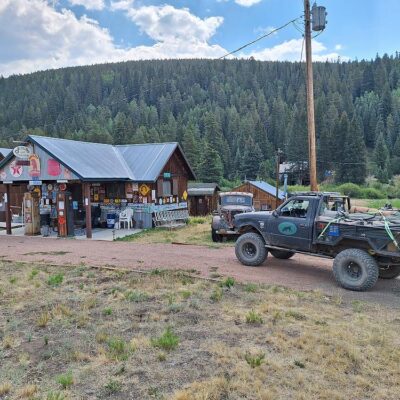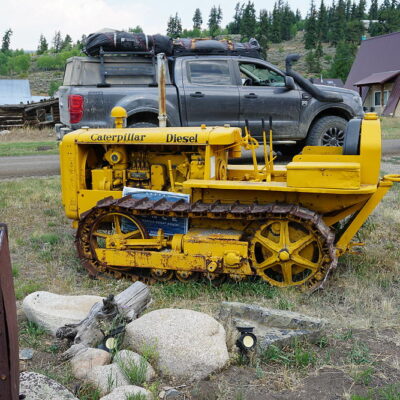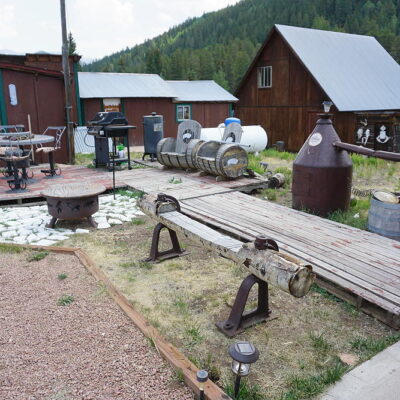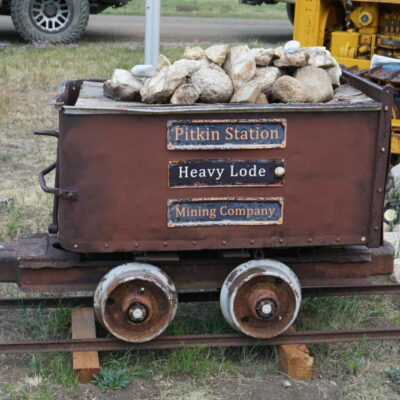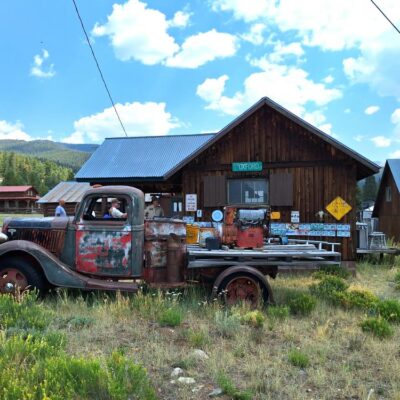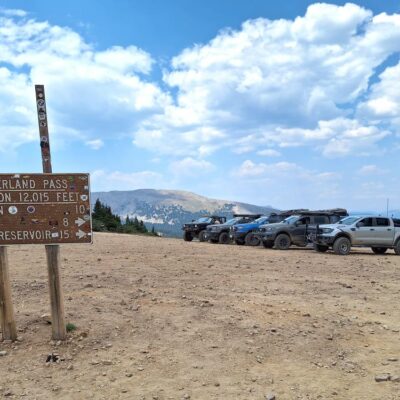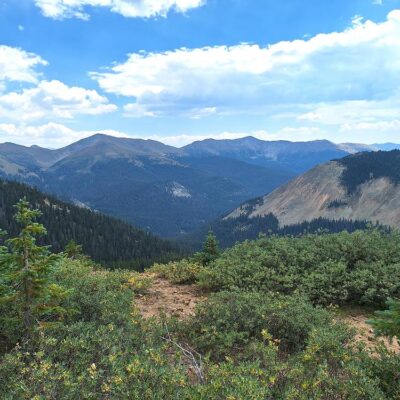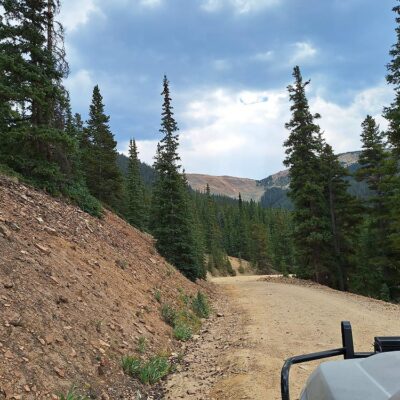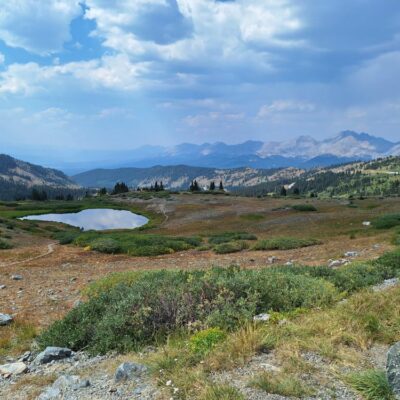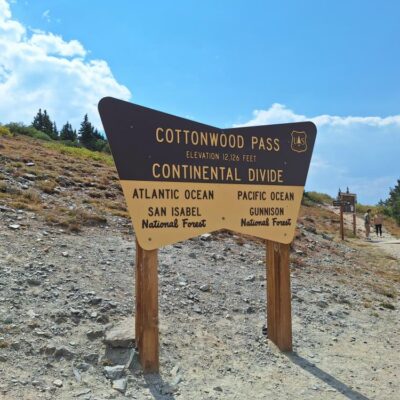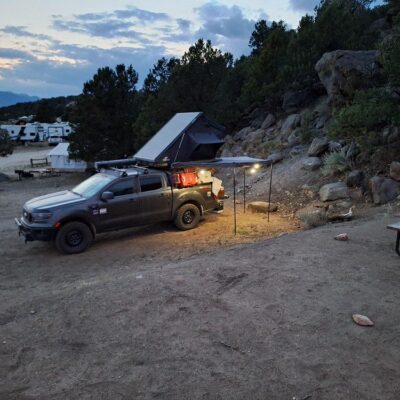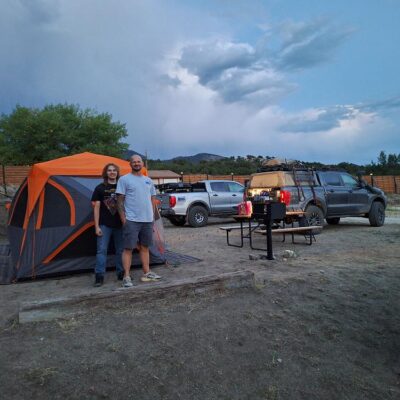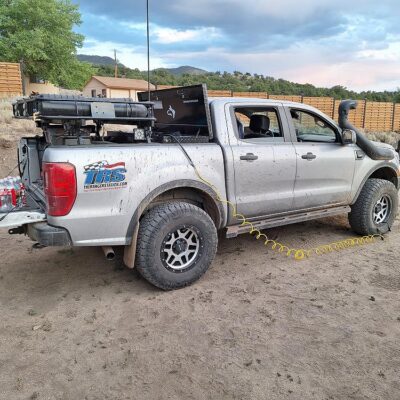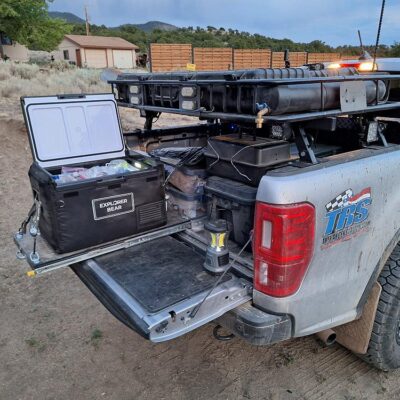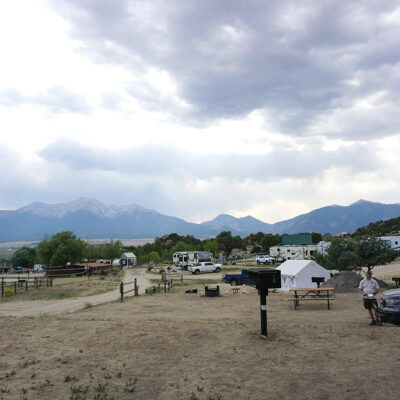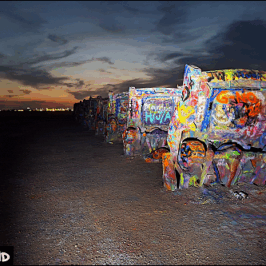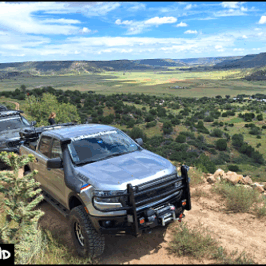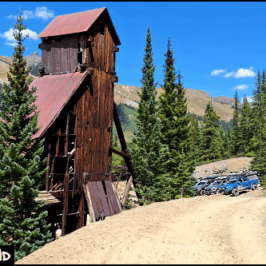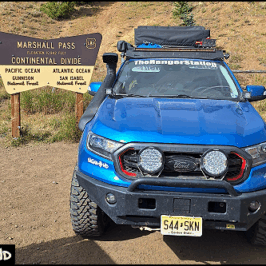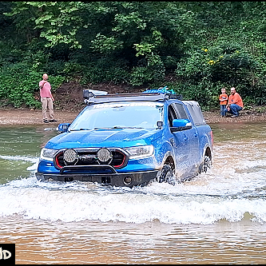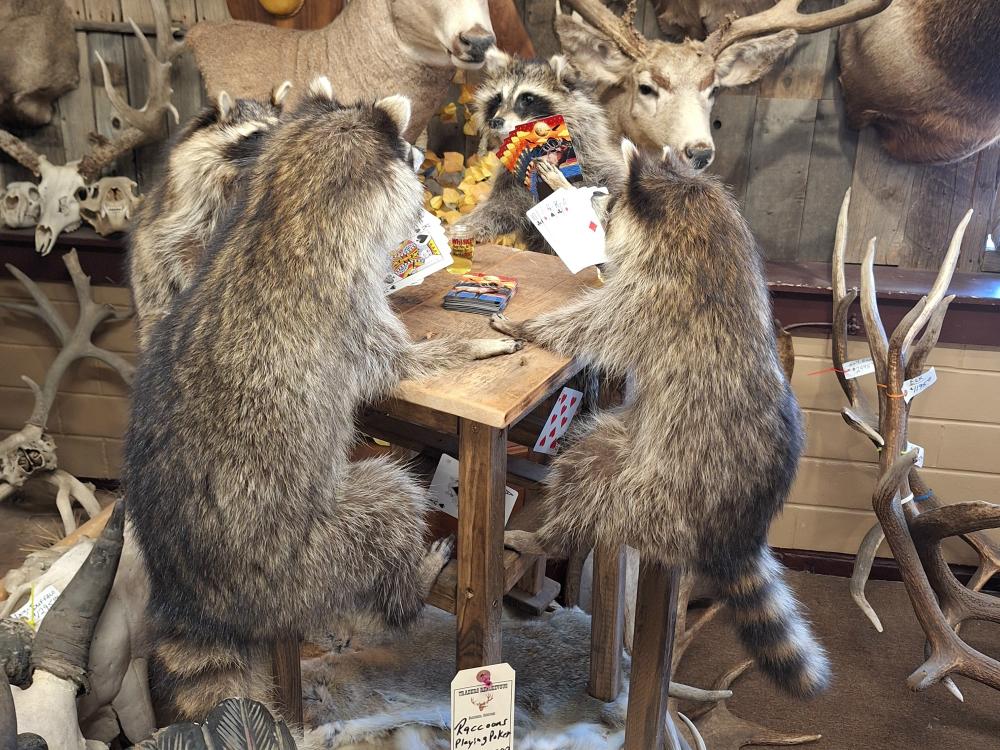
(Raccoons playing poker — fitting after last night’s Pop-Tart raid.)
← Day 7 | Overland Expo Mountain West →
Day Eight: Gunnison to Buena Vista via Cumberland & Cottonwood Pass
Morning in Gunnison
Thursday, August 21st, 2025. Early in the morning we were all woken up by a helicopter that seemed to let its engine warm up for a very long time before taking off. Yep, there’s nothing like a campground right next to an airport. In this case, it was the Gunnison–Crested Butte Regional Airport, and we were at the end of the runway where all the hangars and aircraft were parked.
When I finally crawled out of my sleeping bag, I found Robbie cleaning up around his tent. Robbie has a soft topper over the bed of his Ranger and had put a Safeway grocery bag in there with an unopened box of Pop-Tarts and a bag of tortillas. A raccoon managed to get into the closed topper, raided the bag, and escaped with the goods. They weren’t impressed with the tortillas, but the Pop-Tarts must have been to die for because that’s what they fought over. Nothing like raccoons jacked up on a Pop-Tart sugar high!
Eric woke up with his ass touching the ground. This time it was actually his ass, not a donkey—though I still questioned if one was involved. After repeated use, the frame for his hammock had bent, lowering him to the ground. I asked if a donkey had tried to snuggle with him and overloaded the frame. Too bad there wasn’t surveillance footage of the night’s events.
We packed up camp and prepared to move on. While most had breakfast at camp, I had my sights set on McDonald’s here in Gunnison. After days of camp meals, a Sausage Egg & Cheese McGriddle sounded like heaven.
Traders Rendezvous
Gunnison is also home to Traders Rendezvous, a shop specializing in taxidermy and antlers. I had been there in 2017 and couldn’t wait to share it with the Vagabonds. The plan: grab my McGriddle, then regroup at Traders Rendezvous.
They didn’t disappoint. From squirrels and raccoons to bears and moose, they had it all—plus antlers, skulls, and curiosities. Speaking of raccoons, one mount showed four of them playing poker, which felt fitting after last night’s Pop-Tart raid. All it needed was one with frosting on its paws. I picked up a skull with antlers for $20—perfect for my coffee table with blue glowing LED eyes.
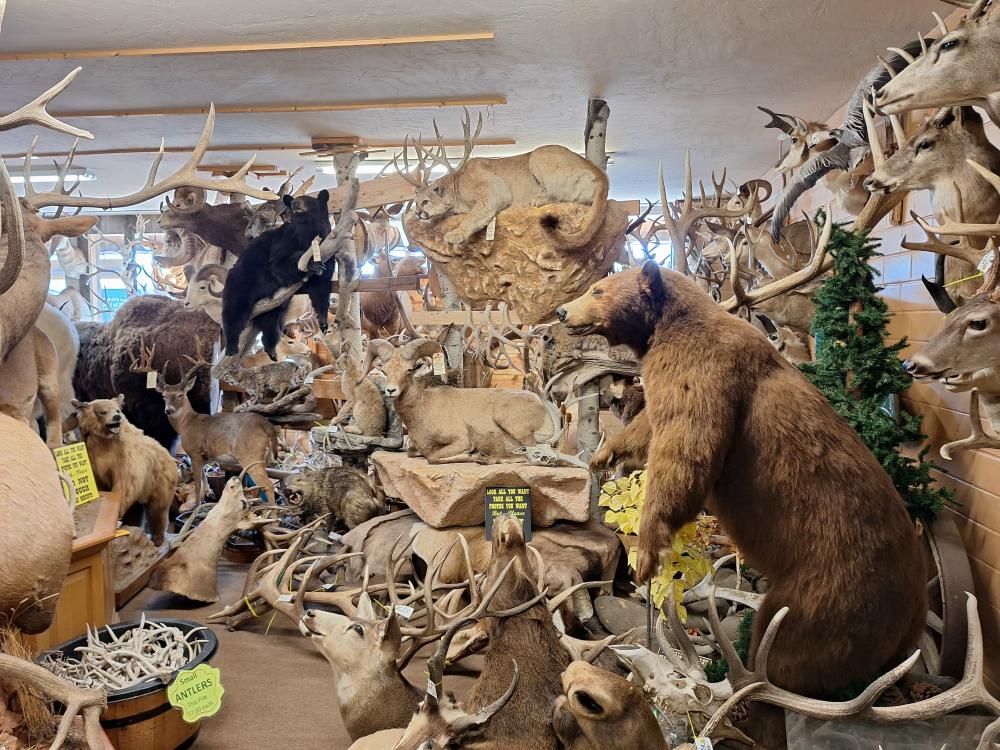
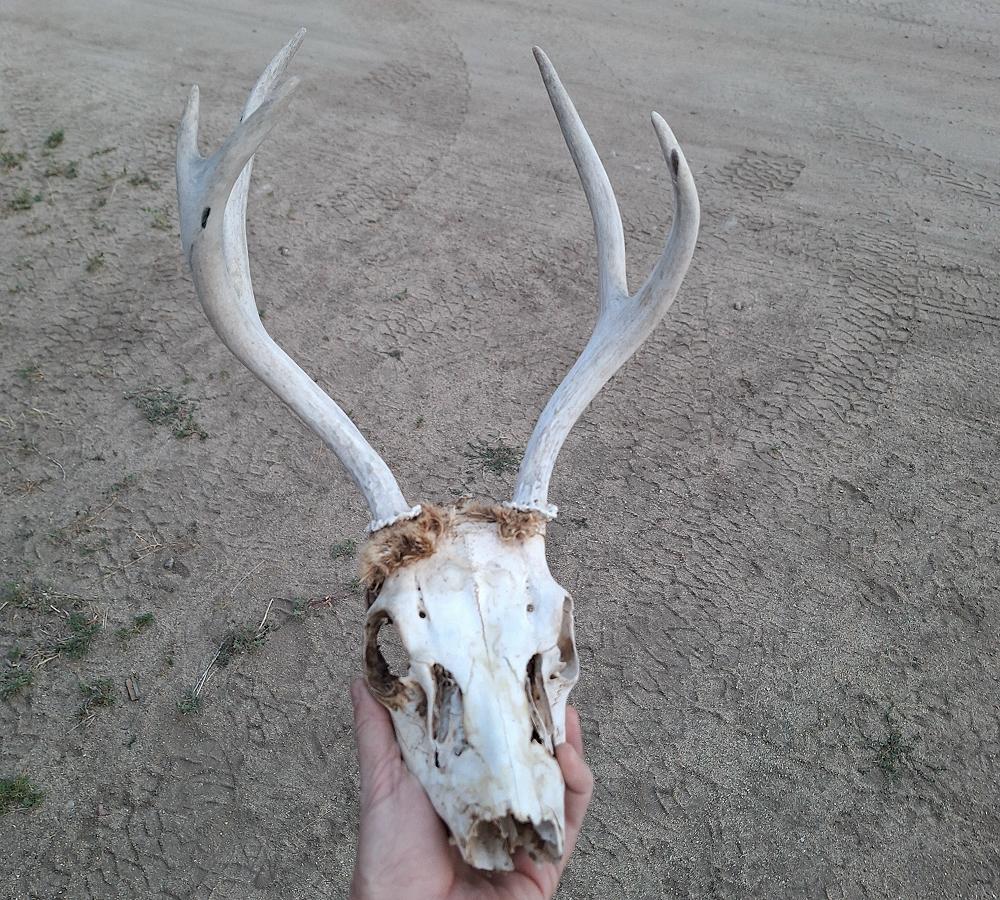
Pitkin, Colorado
Leaving Traders Rendezvous, we fueled up and headed east on US-50 before turning north across Waunita Pass toward the tiny town of Pitkin. We stopped to check out an old vintage gas station that looked like someone’s personal collection of cool relics. I especially loved the old Ford flatbed—imagine it mounted on a modern Ford Ranger drivetrain!
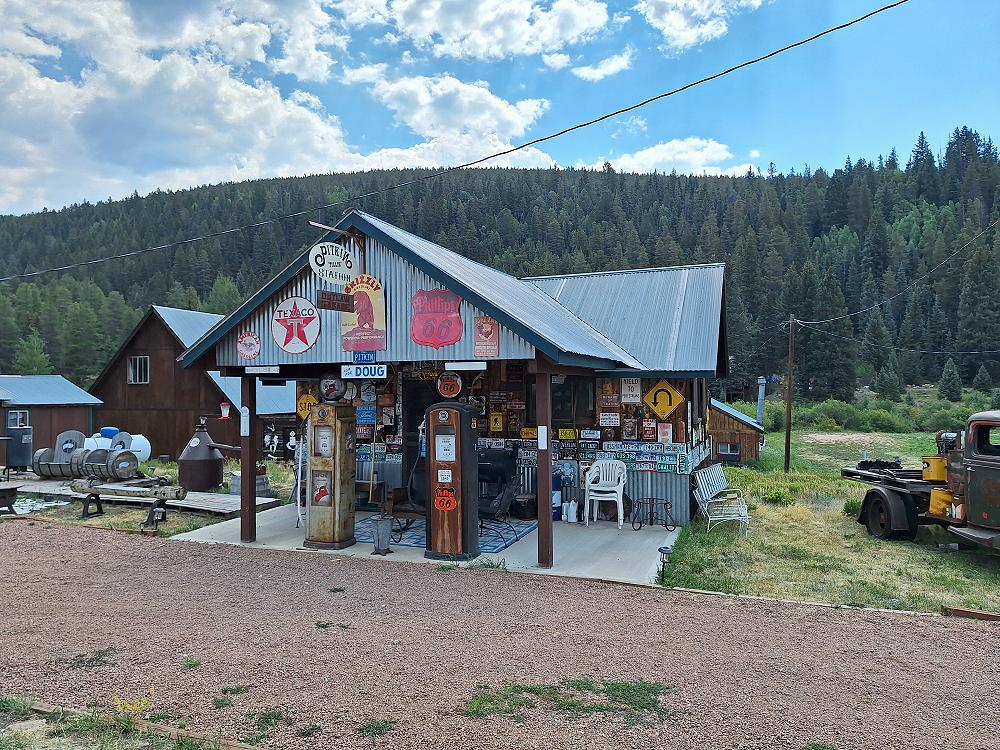
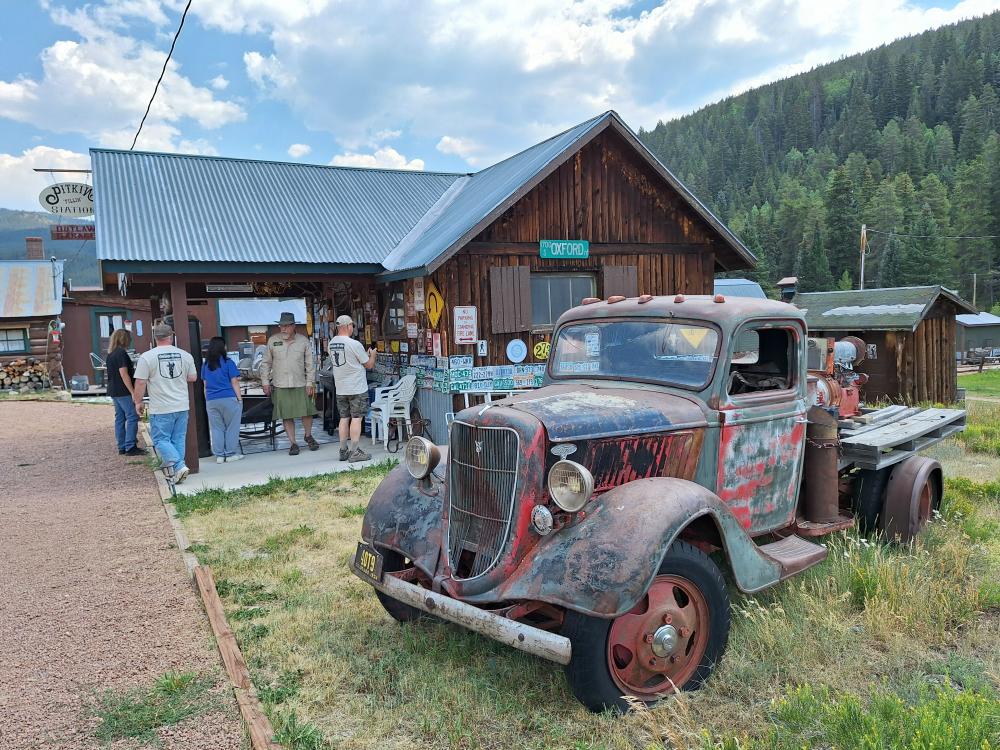
While there, an older gentleman rolled up on a 52-inch Grasshopper 620 zero-turn mower with a side-mounted push mower for banks. He was a character—we chatted about the town, its history, and its heavy snowfalls. Later, he came by again in a side-by-side with a woman (his wife, I assume) and yelled, “I found me a woman!” She laughed as they drove off.
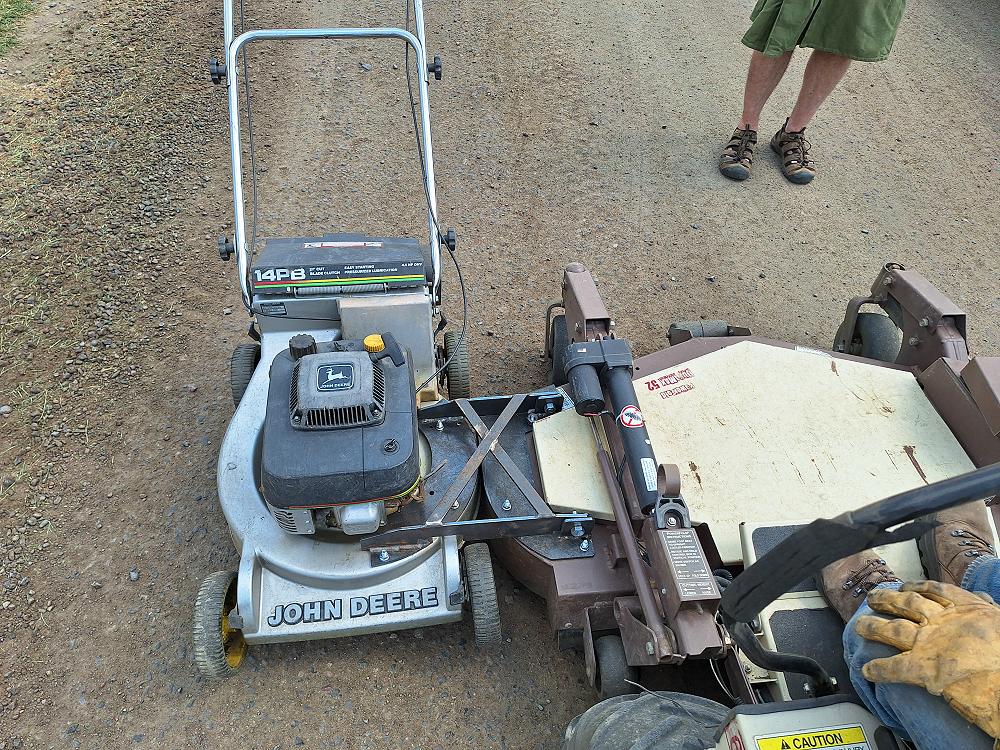
After checking out the vintage gas station, we strolled two short blocks to the Pitkin Hotel, once the crown jewel of this mining town. Originally named the Bon-Ton Hotel, it was built in 1904 by the Masons and, at the time, was billed as “the most modern and best equipped mountain hotel in Colorado.” The hotel was built of stone not just because it was readily available, but also because Pitkin had already burned down three times by 1898.
Back in the 1880s, Pitkin was a booming mining town. Over thirty silver and gold mines were operating in the nearby hills by 1880, and that same year a stage line began service along with a new toll road to Alpine. Sleighs and stagecoaches ran year-round, carrying newcomers arriving at a rate of about 25 per day. By the end of 1882, Pitkin’s population had swelled to between 1,500 and 2,000 residents. Three sawmills worked around the clock just to keep up with the building boom. The Denver and South Park Railroad even tunneled over the Continental Divide through the Alpine Tunnel, down through Woodstock, and into Pitkin, making the town a key hub in the high Rockies.
Today, Pitkin’s mining heyday is long gone. The bustling town of the 1880s has quieted to a year-round population of only about 70 residents. The Pitkin Hotel still stands as a reminder of the town’s past prosperity, connecting the tiny community of today with its larger-than-life history.
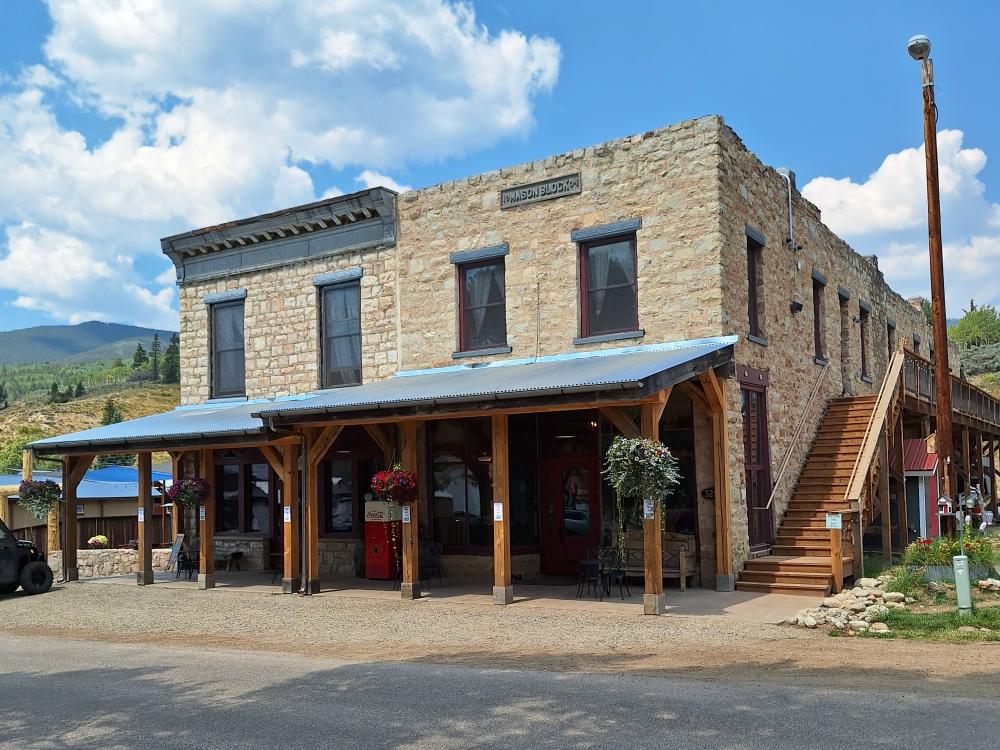
Cumberland Pass
Leaving Pitkin, we crossed Cumberland Pass (12,040 feet above sea level), one of the highest standard car roads in the U.S. Originally built in 1882 to connect Tincup with the Denver–South Park Railroad, it was later improved by the Civilian Conservation Corps in 1935 and again in the 1950s. We stopped at the summit to check out the view and grab a few photos before continuing on towards Tincup.
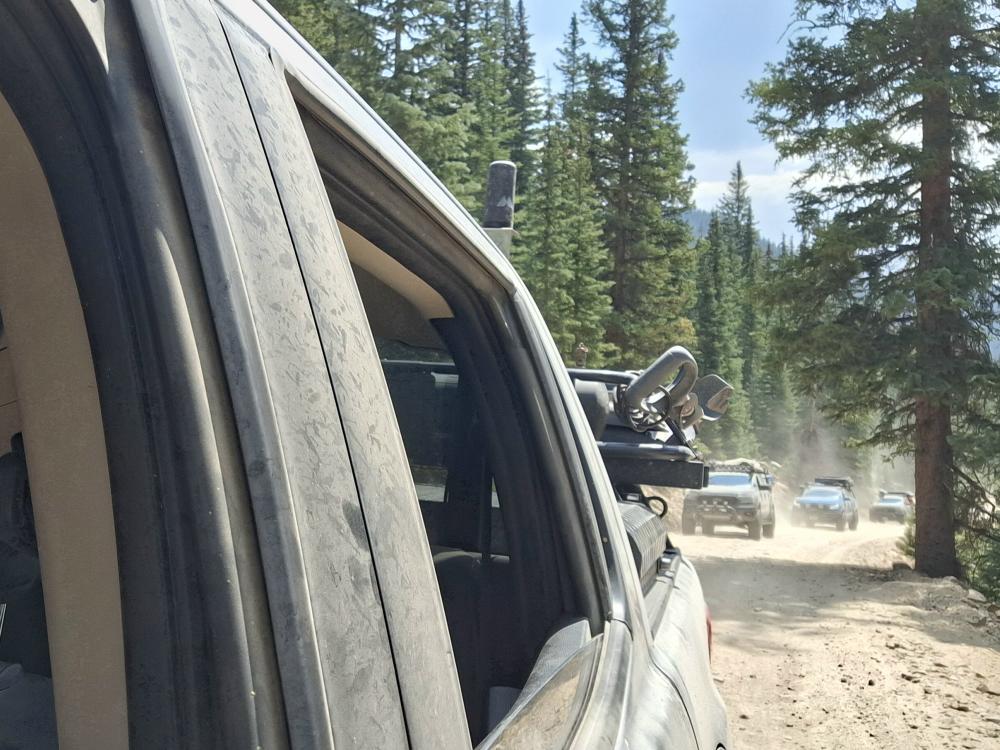
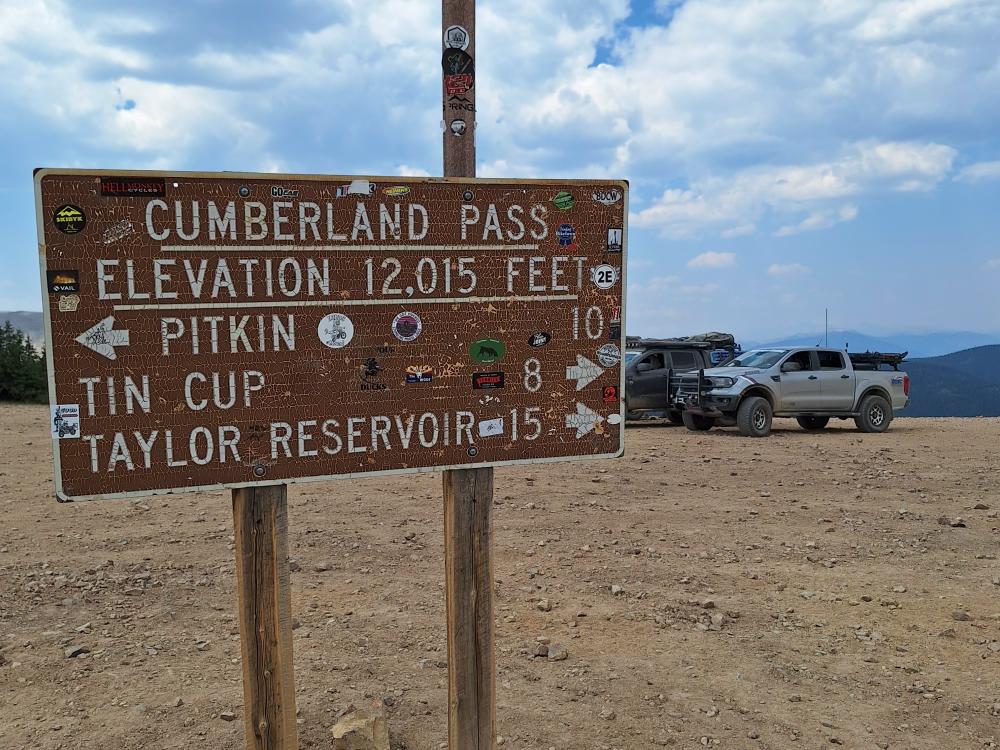
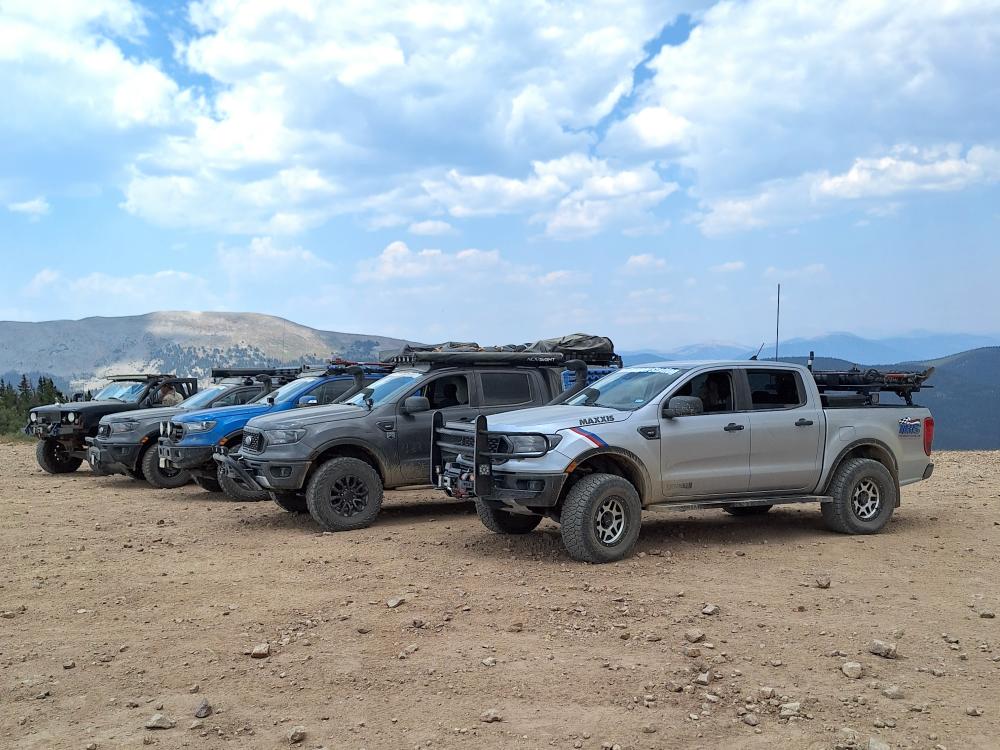
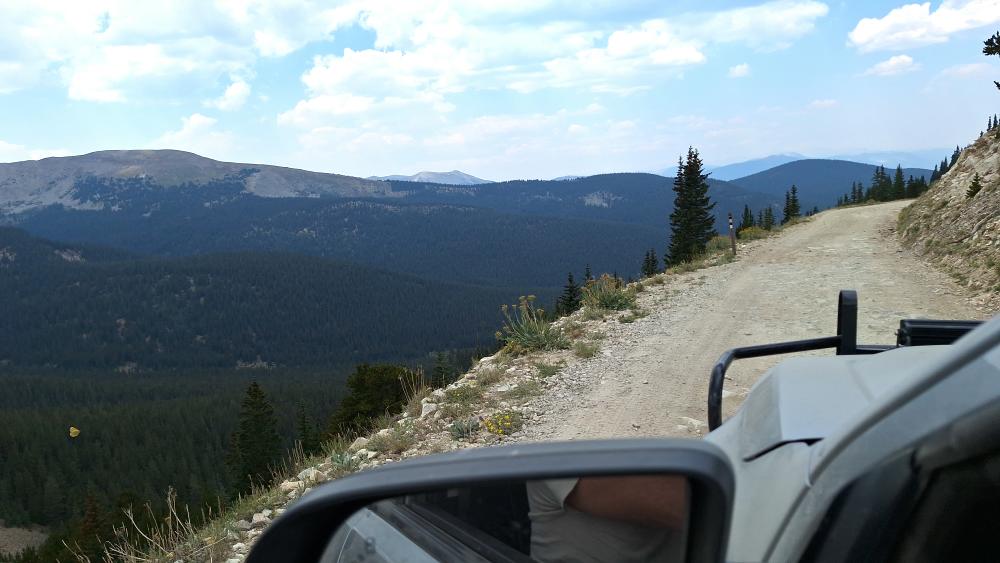
Cottonwood Pass
We continued through Tincup to Cow Creek Road which cut over to Cottonwood Pass. There were two decent water crossings on this road and I went ahead of the others to take a video of them. If only I had a DJI drone…… The video didn’t turn out very good. That’s what I get for rushing and not taking the time to set the shot up. Live and learn.
Once we got to Cottonwood Pass, we drove to the summit and then stopped to enjoy the view, take a break, and eat some snacks.
At 12,126 feet, Cottonwood Pass is the highest paved crossing of the Continental Divide in the U.S., and the second highest pass with an improved road in Colorado. The idea for the road began in 1955 when the Forest Service needed a way to get timber out. By 1958, there was a road – but it was dirt. A project to widen, realign, and pave the pass began in the spring of 2017 and was completed in September 2019. The three-year-long project made the pass the country’s second-highest paved pass.
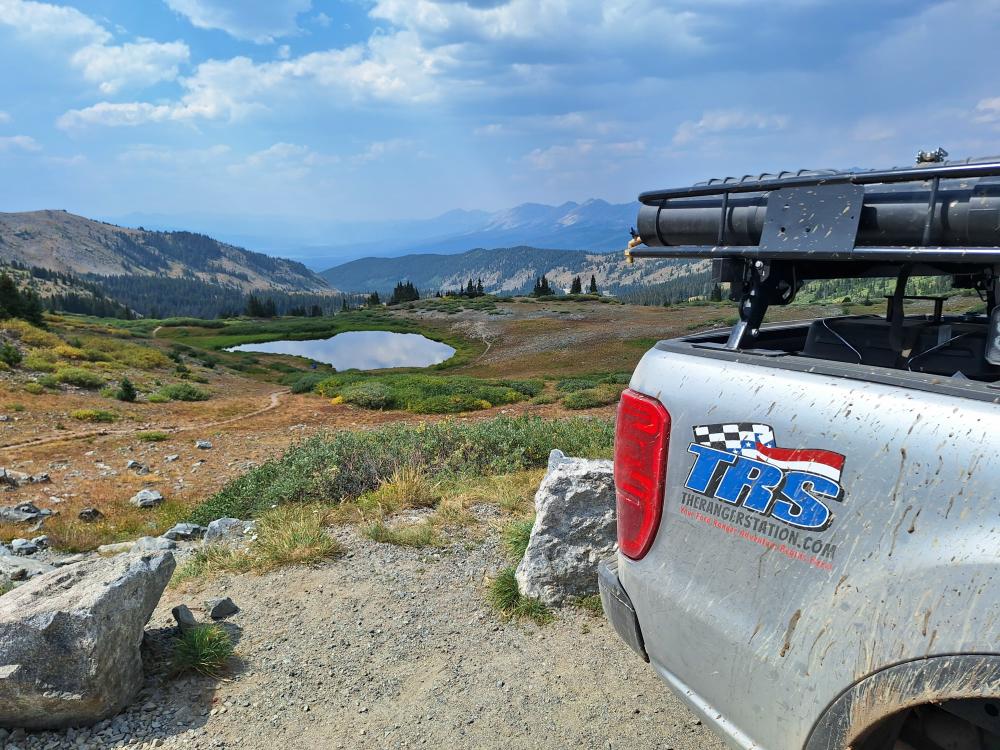
Camping in Buena Vista
From here, we made our way into Buena Vista and found campsites at the BV Overlook Camp & Lodging. When we registered, we discovered the campground had a recreation room complete with a pool table, couch, and chairs. Eric and Mike headed to their campsites to make dinner, but Robbie, Zane, Kevin, Maggie, and I decided to order some Domino’s pizza instead. While we waited for delivery, Robbie and I played a few games of pool. After eight days on the road, that little bit of comfort felt like a real treat.
Eventually, we accepted the fact that we needed to set up camp before dark. Our site was in a great spot — tucked into a corner of the campground with a massive rock wall behind us. Storm clouds rolled nearby, and we saw some rain in the distance, but it never hit our camp. I still had my GMRS radio on and could hear a group of guys frantically going back and forth about finding a place to camp. Meanwhile, we were settled in with pizza and pool — it couldn’t have been better.
Knowing that the next morning’s drive to Overland Expo Mountain West would be all highway, we went ahead and aired up our tires. I can’t say enough about how convenient my Smittybilt 2781 compressor is now that it’s permanently mounted and wired into my toolbox. No more dragging it out and clamping it to the battery — I just open the lid, flip a switch, and start airing up. My Explorer Bear 12V refrigerator has been just as valuable on this trip. Not having to stop for ice or deal with soggy, waterlogged food makes a huge difference on the road.
Friday’s drive was uneventful, and before long we arrived at Overland Expo Mountain West for Days 9–11 of the adventure. You can read more about that in the dedicated recap: Overland Expo Mountain West 2025.
Stay tuned for the final article and video highlighting our entire Colorado trip!
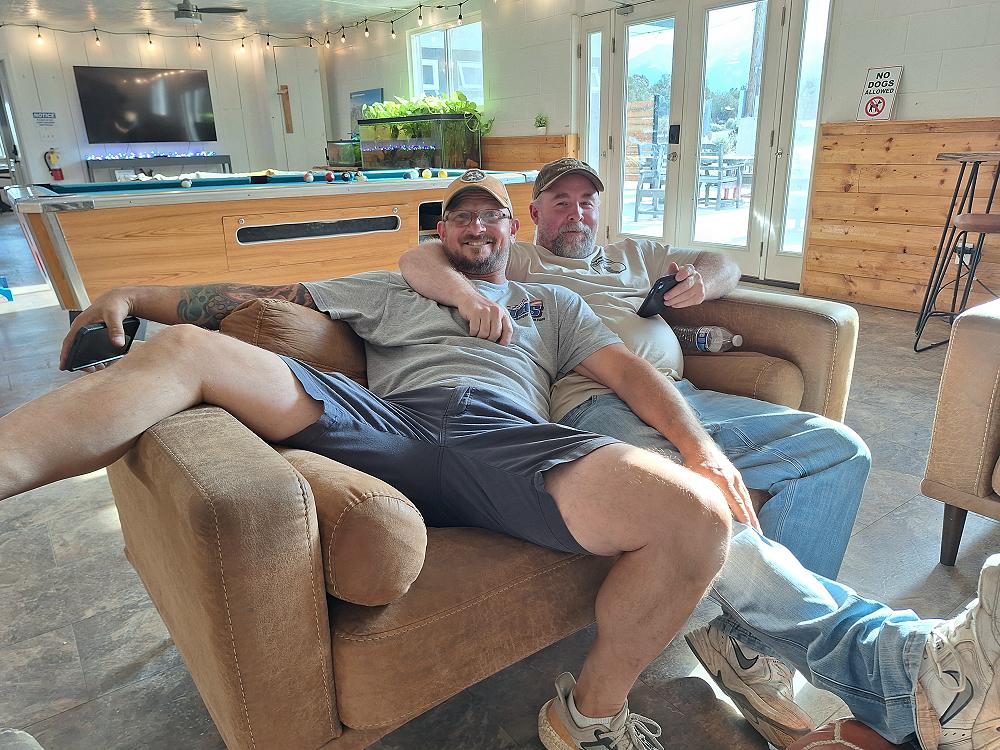
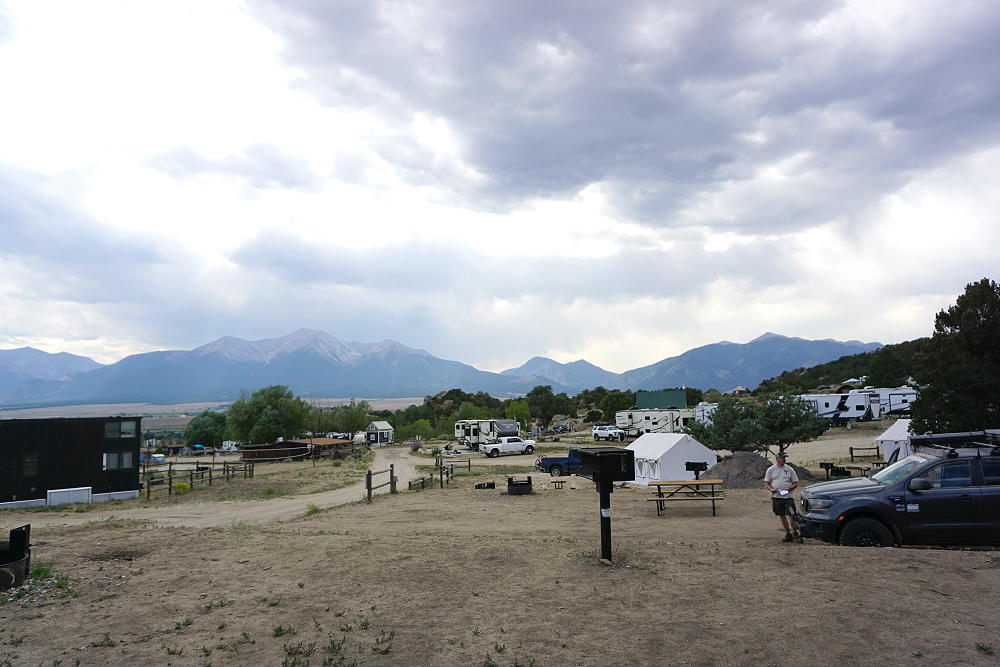
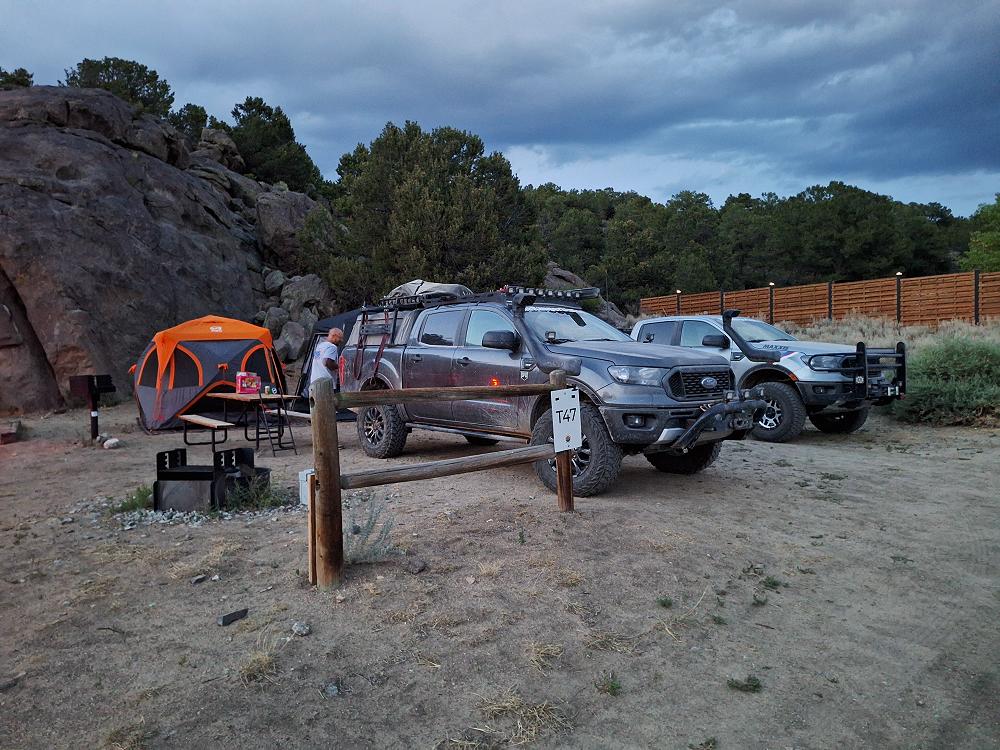

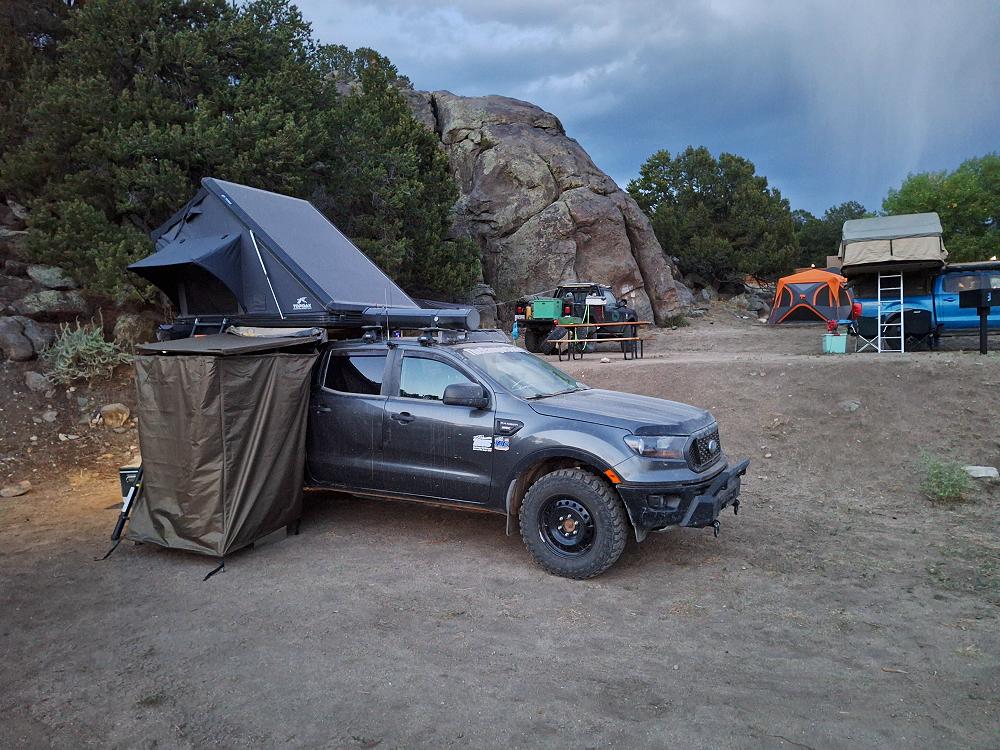
Vagabonds Colorado Adventure 2025 – Day Eight Map:
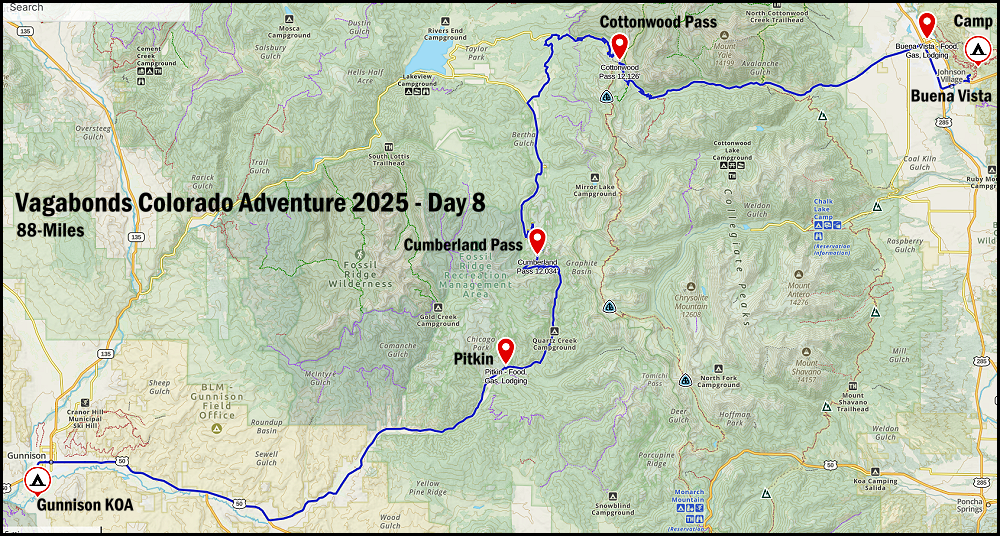
Video
← Day 7 | Overland Expo Mountain West →
Check Out:
The Adventure Begins – Forum Discussion
Vagabonds Colorado Adventure 2025 – Day One & Two
Vagabonds Colorado Adventure 2025 – Day Three & Four
Vagabonds Colorado Adventure 2025 – Day Five
Vagabonds Colorado Adventure 2025 – Day Six
Vagabonds Colorado Adventure 2025 – Day Seven
About The Author
Jim Oaks is the founder of The Ranger Station, one of the longest-running Ford Ranger enthusiast communities on the web. He has spent over three decades owning, modifying, repairing, and driving Ford Rangers on the street, trail, and cross-country routes.
Since launching TheRangerStation.com in 1999, Jim has documented thousands of real-world Ranger builds, technical repairs, drivetrain swaps, suspension modifications, and off-road tests contributed by owners worldwide. His work has been referenced by enthusiasts, mechanics, and off-road builders looking for practical, experience-based information rather than theoretical advice.
Jim’s hands-on experience includes long-distance overland travel, trail use, drivetrain and axle upgrades, suspension tuning, and platform comparisons across multiple Ranger generations. The content published on The Ranger Station is grounded in first-hand experience and community-verified data, not marketing claims or generic specifications.

